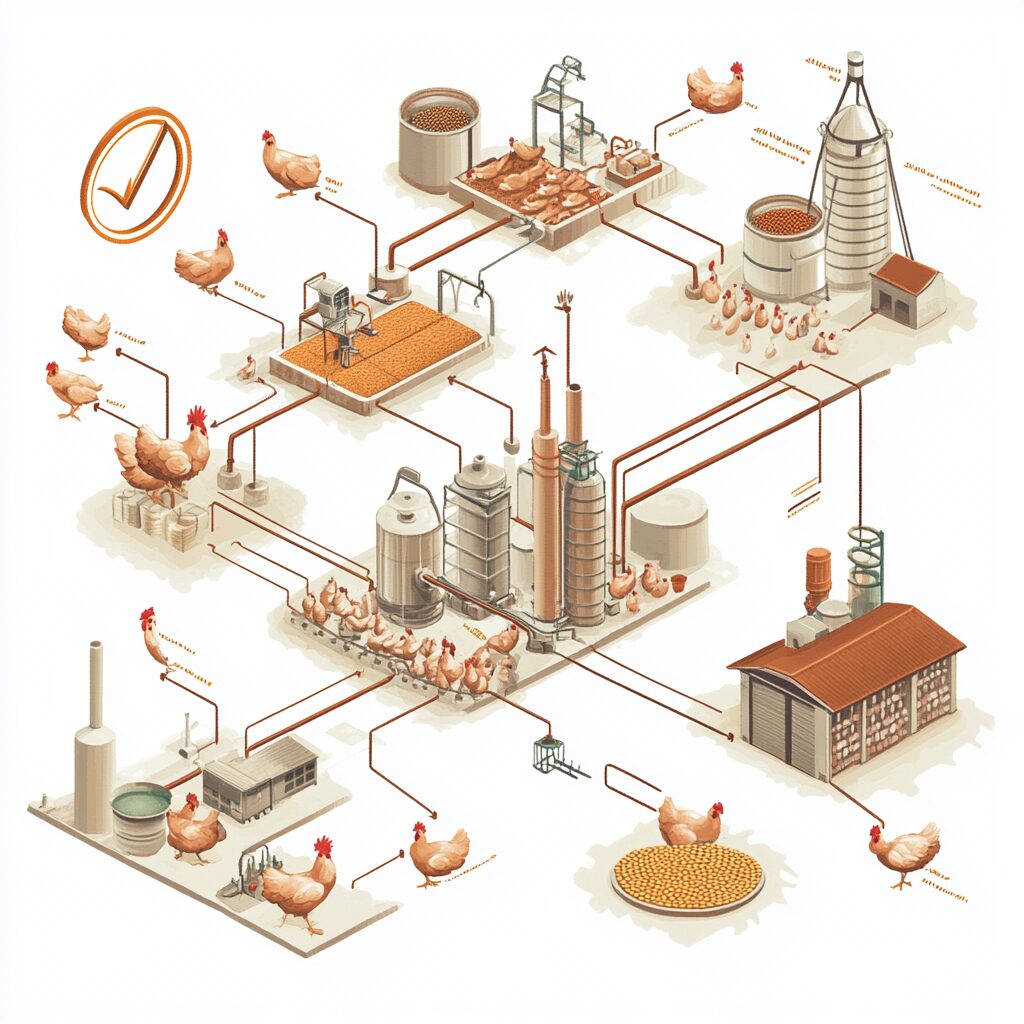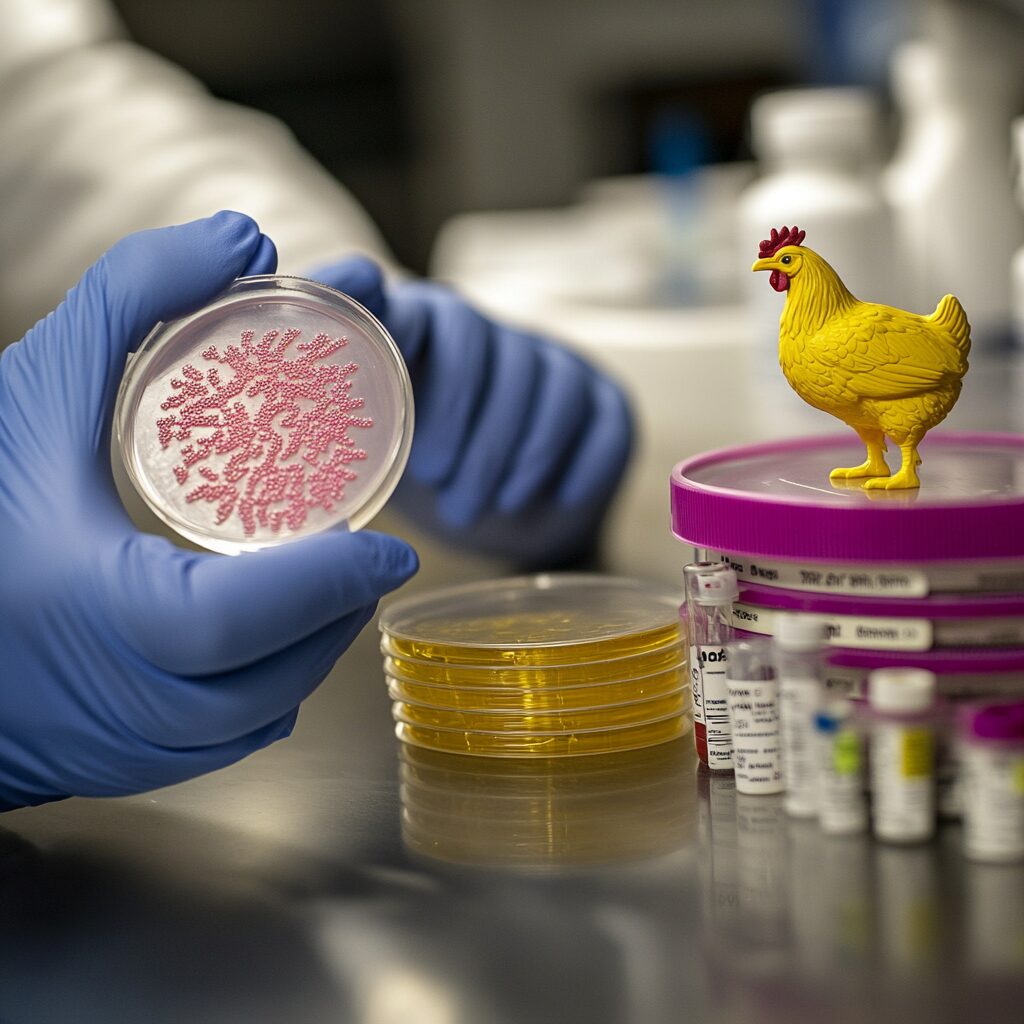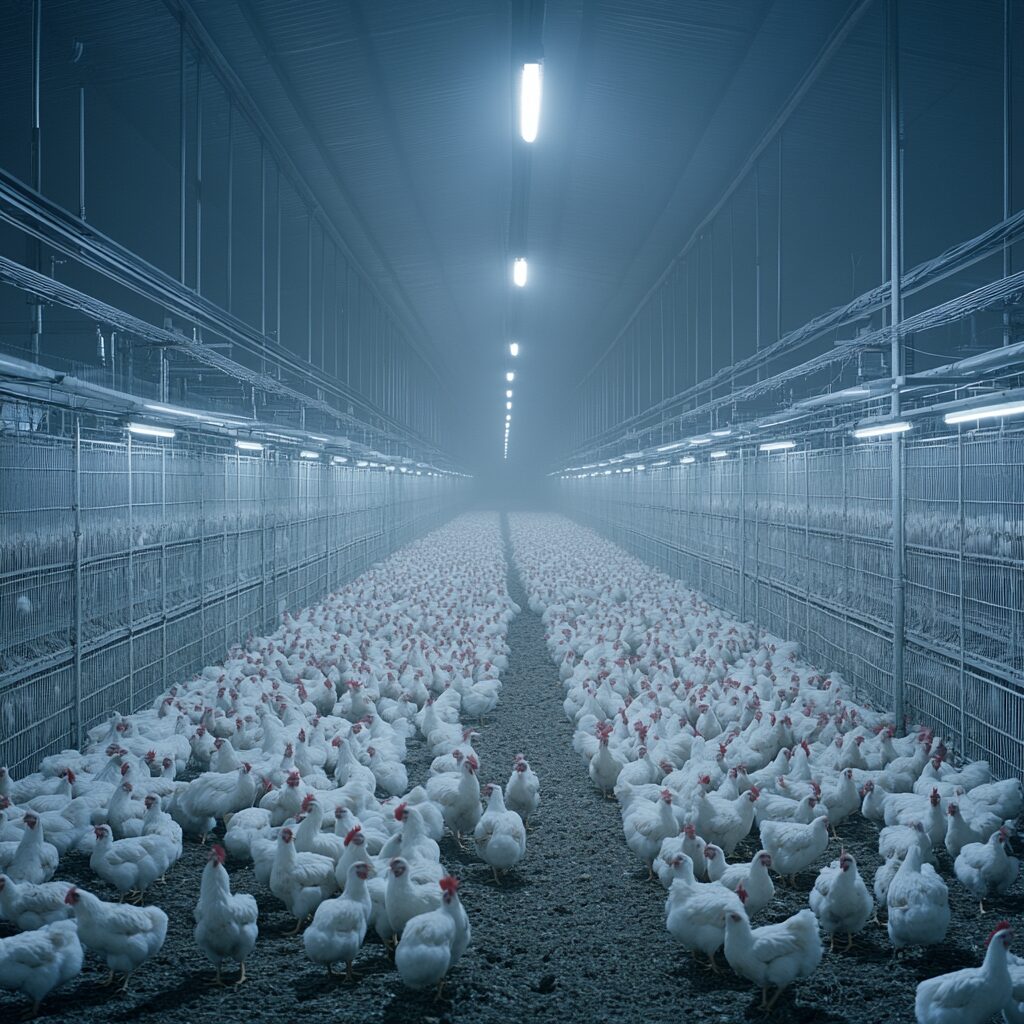The next time you’re eyeing that succulent roast chicken or crispy fried drumstick, you might want to pause and consider what’s really on your plate. The U.S. poultry industry, a behemoth that churned out a staggering $76.9 billion in sales in 2022, has a story to tell – and it’s not all sunshine and free-range pastures. From the cramped conditions of industrial farms to the lightning-fast processing lines, the journey of that chicken from egg to your dinner table is a tale that might ruffle a few feathers. Ready to peek behind the curtain of one of America’s most consumed meats?
The myth of the family farm is just that – a myth

If you picture chickens pecking happily in a sun-drenched farmyard, it’s time for a reality check. The idyllic family farm has gone the way of the dodo. Today, over 97% of chicken farmers in the U.S. work under contract with large brands. These aren’t small-scale operations but massive, vertically integrated companies that control every aspect of production, from the egg to your plate.
The shift began in the mid-20th century when technological advances allowed for year-round production. Artificial lighting and vitamin D supplementation meant chickens could be raised in confined spaces, away from natural sunlight. This industrialization has led to a concentration of power in the hands of a few large corporations, squeezing out independent farmers and transforming the landscape of rural America.
What does this mean for the chickens? Instead of roaming free, they’re often packed into enormous warehouses, where every aspect of their environment is controlled for maximum efficiency. It’s a far cry from the pastoral scenes on your egg carton.
Chickens grow at an unnatural, alarming rate
Remember when chickens took months to reach maturity? Those days are long gone. Through aggressive genetic selection and nutritional modifications, today’s broiler chickens reach market weight in a mere 6-7 weeks. That’s less time than it takes for a human baby to learn to roll over.
This rapid growth comes at a cost. Many chickens suffer from leg problems, heart issues, and other health complications due to their bodies growing faster than their organs can keep up. Imagine if human teenagers grew to adult size in just a few months – that’s essentially what’s happening to these birds.
The industry touts this as an achievement in efficiency, but at what cost to animal welfare and meat quality? The next time you bite into a chicken breast, consider that it came from a bird that was essentially still an infant.
The dark side of vertical integration

Vertical integration sounds efficient, right? One company controlling everything from the hatchery to the processing plant. But this system has a sinister side. Many firms now control multiple stages of production, from feed to slaughter. This concentration of power leaves farmers with little autonomy and consumers with fewer choices.
Contract farmers, who raise the chickens, often find themselves trapped in a system where they bear all the risks but have little control. They’re required to make substantial investments in facilities, only to be at the mercy of the company for their income. If a farmer speaks out about poor conditions or unfair practices, they risk losing their livelihood.
This system also makes it challenging to trace the origin of your chicken or hold companies accountable for food safety issues. When one entity controls the entire process, who’s watching the watchmen?
Processing plants: speed over safety
The speed of modern chicken processing lines is mind-boggling. Workers process thousands of birds per hour, with little time to ensure proper sanitation or humane handling. This breakneck pace not only raises concerns about food safety but also takes a toll on the workers themselves.
Poultry workers face high rates of injury, including repetitive strain injuries, cuts, and respiratory issues from exposure to chemicals and pathogens. The psychological stress of working in these conditions is also significant. Yet, attempts to slow down processing lines or improve worker conditions often face stiff resistance from industry giants focused on maximizing profits.
What if the true cost of that cheap chicken dinner included the health and well-being of the workers who processed it? It’s a question worth chewing on.
The environmental impact is far from chicken feed
While the industry boasts about efficiency, the environmental toll of industrial chicken farming is substantial. The sheer volume of waste produced by large-scale operations is staggering. Chicken manure, laden with nutrients and potential pathogens, can lead to significant water pollution if not managed properly.
Moreover, the massive amounts of corn and soy required to feed these birds contribute to deforestation and monoculture farming practices. The carbon footprint of transporting feed, chickens, and processed products across the country is also considerable.
While chicken may seem like a more environmentally friendly option compared to beef, the reality is that industrial poultry farming comes with its own set of ecological challenges that are often overlooked.
Antibiotics and food safety: a recipe for resistance

The widespread use of antibiotics in chicken farming is a ticking time bomb for public health. While the practice helps prevent disease in cramped, stressful conditions, it’s also contributing to the development of antibiotic-resistant bacteria – a global health crisis in the making.
Even more concerning is the use of antimicrobial rinses, colloquially known as “chlorinated chicken.” While intended to reduce pathogens, these practices raise questions about food safety and have been a point of contention in international trade. Are we trading long-term health risks for short-term convenience?
The next time you’re tempted to dismiss food safety concerns as overhyped, remember that the practices used to bring that chicken to your table may be contributing to a future where common infections become untreatable.
The illusion of choice in the supermarket aisle
Walk down the poultry section of your local supermarket, and you’ll see a dizzying array of brands and labels. But here’s the kicker: many of these seemingly different options come from the same handful of massive producers. The illusion of choice masks a market dominated by a few key players.
This concentration of power not only limits consumer options but also makes it difficult for truly independent or small-scale producers to compete. There are only around 25 small-scale USDA inspected poultry processors in the country willing to work with independent farmers. This bottleneck effectively shuts out many alternatives to the industrial model.
What if the “choices” we make in the grocery store are largely an illusion, shaped by a handful of corporations rather than genuine market diversity?
The true cost of cheap chicken
The poultry industry often touts the affordability of chicken as a benefit to consumers. And it’s true – chicken is cheaper than ever before. But this low price tag comes at a cost that’s not reflected on your receipt.
From the environmental impact and animal welfare concerns to the toll on worker health and the potential long-term consequences of antibiotic resistance, the true cost of that bargain bucket is far higher than we’re led to believe. Not to mention the billions in government subsidies that prop up the industry, effectively socializing the costs while privatizing the profits.
Perhaps it’s time to ask ourselves: is cheap chicken really worth the price we’re all paying?
The story of chicken in America is one of technological triumph and ethical quandary, of abundance and hidden costs. As consumers, we have the power to shape this industry through our choices and demands for transparency. Whether you choose to continue eating chicken or not, being informed about the realities behind your food is the first step towards a more sustainable and ethical food system. The next time you’re faced with a chicken dinner, you’ll have more to chew on than just the meat on your plate.

